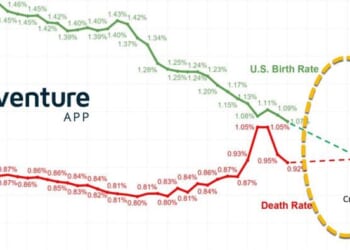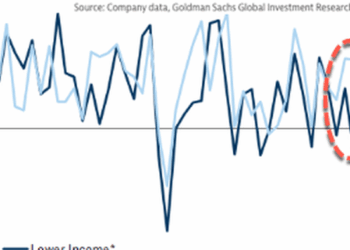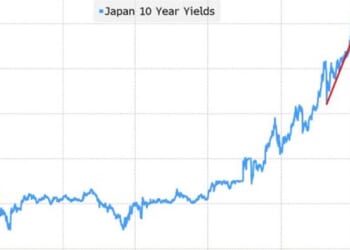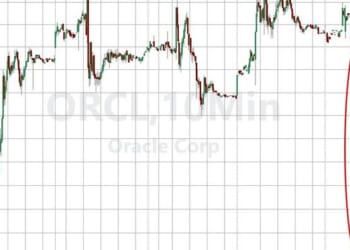One of the most common economic claims of the modern era holds that the wealthy do not pay their fair share in federal taxes. Some versions of this argument go a step further, asserting that the average billionaire pays a lower federal tax rate than many working-class Americans.
Former President Joe Biden made both claims in his 2024 State of the Union address, and politicians such as Sens. Elizabeth Warren and Bernie Sanders have used it to justify sweeping proposals for a “wealth tax” on unrealized capital gains. While most legislative efforts to “soak the rich” originate on the political left, some populist Republicans in the circles around Vice President J.D. Vance have quietly warmed to the idea of a “millionaire tax,” aiming to bump the top marginal income tax rate up from 37 percent.
Claims about the rich not paying their fair share of taxes have percolated around U.S. politics for decades. The specific claim that top earners pay lower tax rates than the average American traces almost exclusively to one source: a cluster of studies by French economists Thomas Piketty, Emmanuel Saez, and Gabriel Zucman in the early 2010s that made a case for overhauling the U.S. tax code to address the alleged rise of economic inequality through steep progressive income and wealth redistribution.
In 2019, Zucman added to the narrative by purporting to show that the rich pay a lower overall tax rate than most Americans. David Leonhardt of the New York Times ran a splashy infographic-laced report claiming “The Rich Really Do Pay Lower Taxes than You.” Christopher Ingraham of the Washington Post repeated the claim, declaring that, “For the first time in history, U.S. billionaires paid a lower tax rate than the working class.” In Zucman’s telling, the wealthiest 0.001 percent of earners paid an overall tax rate of just 23 percent in 2018, placing them below the 24.2 percent he says the bottom 50 percent of taxpayers paid.
So what do billionaires really pay in taxes, and how does it compare to the rest of the taxpaying public? To answer this question we must first disaggregate the various sources and types of taxation.
Federal income tax burdens and the rich.
Most tax policy discussions at the federal level begin with the personal income tax, which is the main source of revenue for the U.S. government. These are the payroll taxes on income earnings that the government collects out of every paycheck. In their simplest form, current federal income tax brackets reveal a steeply progressive structure—meaning that the tax rate increases as a taxpayer’s income rises. The lowest bracket currently assesses a 10 percent levy on single-filer income earnings up to $11,600. Earnings above about $609,000 a year incur a much steeper rate of 37 percent. Most salaries fall somewhere in between and incur statutory tax rates that increase as one’s earnings surpass fixed thresholds (meaning all income below the threshold is taxed at the lower bracket, and all above faces higher rates that ratchet upward as income increases).
We can see the intended progressivity of the federal income tax system by looking at who shoulders the income tax burden. The figure below displays the share of the federal income tax burden carried by the top 1 percent and top 10 percent of earners over time.

The data undermine two common political talking points about the distribution of federal tax burdens. First, we see that the New Deal era and postwar period transformed the income tax from a tax on the highest earners into a mass tax on almost all income earners. As a result, between the 1940s and 1970s, lower- and middle-income Americans shouldered a larger share of the federal tax burden than they do today.
Second, beginning in 1981, the federal income tax burden has shifted more heavily onto the highest income earners. This has been achieved through a suite of tax credits that offset the federal income tax burden on lower-income individuals and through a marginal tax rate schedule that remains steeply progressive. Policies such as the Earned Income Tax Credit and Child Tax Credit completely offset the individual federal income tax burden faced by the lowest earners. As of 2018, an estimated 34.7 percent of federal income tax filers face zero tax liability on their income earnings (although they remain responsible for payroll taxes toward Social Security and Medicare).
By way of illustration, the bottom 90 percent of filers shouldered about half of the federal income tax burden in 1960 compared to only one quarter today. In 1960, the top 1 percent of individual filers shouldered just 20 percent of the income tax burden. Since 2005, the top 1 percent have consistently paid about 40 percent of the federal income receipts. Over the same period, the top 10 percent of filers have seen their share grow from half to about 77 percent of the federal income tax burden. Based on this measure, the federal income tax system remains steeply and unambiguously progressive.
Measuring other types of taxes.
Since federal income taxes generate the lion’s share of government revenue, they dominate most tax policy discussions. Americans pay other taxes at the federal, state, and local level. Unlike the federal income tax, these tax instruments often lack progressive characteristics and some place heavier burdens on lower-income earners. Sales and property taxes at the state and local levels are often regressive, because they apply a uniform tax rate on all taxpayers regardless of income. Taxes on food, necessities, and housing are more likely to entail fixed costs on lower-income individuals, whereas wealthier earners are more able to absorb those costs. This means that taxes take up a larger share of earnings among lower-income households. These taxes vary widely by state and municipality, making it difficult to estimate their overall effects by income category. The Institute on Taxation and Economic Policy (ITEP) maintains estimates of state-level tax burdens for comparison. In a recent report, ITEP found that the top 1 percent of earners pay an average effective state and local tax rate of 7.4 percent. By comparison, the bottom 20 percent of earners pay a slightly higher state and local effective tax rate of 11.4 percent on average.
Some federal taxes also impose regressive burdens. The federal payroll tax, assessed to fund old-age entitlements like Social Security and Medicare, is usually regressive since it imposes a larger burden on lower- and middle-income earners. Tariffs at the federal level tend to be regressive, and particularly in the short run. They raise prices on goods that are likely to comprise a larger share of the budget for lower income households.
When measured in aggregate, the regressive features of state and local taxes as well as federal payroll taxes and tariffs do offset some of the progressivity of the federal income tax system. They are not large enough to reverse it, though.
Using 2016 data, economist Jason Furman estimated the combined aggregate burden of federal, state, and local taxes by income class. His calculations also include tax credits for the lowest earners, which offset other taxes by making their federal income tax burden negative. Even after accounting for the regressive features of state and local taxes, the individual income tax system’s overall progressivity still ensures that the wealthiest 1 percent pay a substantially higher overall tax rate than any percentile below them. Hovering at just under 40 percent in total, the wealthiest earners pay almost three times the overall effective tax rate of the lowest quintile, and almost twice the rate of the second quintile.

A final category of federal taxes warrants mention, as it further complicates the discussion of tax burdens over time. About 9 percent of federal tax revenue comes from corporate income taxes (by comparison, 54 percent comes from individual income taxes and 30 percent comes from federal payroll taxes). As legal entities rather than individuals, corporations do not directly appear in distributional calculations of the tax system’s burdens. Instead, the incidence of corporate taxation falls indirectly on individuals who own shares of, do certain types of business with, or work for taxed corporations. This tax burden passes through onto others in complex ways that are difficult to measure directly. For example, a higher corporate tax rate may translate into reduced dividend payments or overall returns to shareholders of the company’s stocks, higher prices to other business customers, or lower salaries and benefits to employees of the corporation, not to mention secondary effects such as companies relocating abroad to countries with friendlier tax rates.
We can consider corporate taxes to be progressive in their effects, since wealthier individuals tend to own more shares in both privately and publicly traded companies. Corporate tax rates have changed over time though, resulting in income shifting and similar legal strategies to reduce the overall tax burden. This makes it difficult to measure the distribution of the burdens from corporate income taxes.
The Piketty-Saez-Zucman measurements.
Almost all empirical claims about high-income earners shirking their tax burden trace back to Piketty, Saez, and Zucman and their push for a new “wealth tax” on unrealized capital gains from the stock and property holdings of the wealthy.
At the same time, Zucman’s widely publicized claims about the relative tax rates paid by high and low income earners extend well beyond realized and unrealized income. They also incorporate distributional estimates from state and local taxes, which would not be affected by the policies he and his colleagues advocate. They also rely upon unconventional accounting practices that distort the way corporate tax incidence is assigned at the top of the income distribution and exclude the effects of tax credits at the bottom of the distribution. These arbitrary data constructions have the cumulative effect of artificially increasing the average tax rate on the lowest earners and artificially suppressing the actual tax rates paid by the highest earners. Zucman claims that these two rates intersected around 2018, yielding a dubious result where the ultra-wealthy face a lower overall tax rate than the average American.
The scholarly work of Piketty, Saez, and Zucman did not always align with this claim. In early 2018, the trio published a study in the Quarterly Journal of Economics that attempted to estimate changes in tax incidence by income group since the 1960s. The trio estimated that in 1962 the top 1 percent of earners paid an overall tax rate of 39.3 percent. As of 2014, this same group’s average tax rate had decreased only slightly to 36.4 percent. When the three economists restricted their tabulations to multimillionaires and billionaires, measured as the top 0.001 percent of earners, the same pattern held. In 1962 this ultrawealthy group paid an average overall tax rate of 44.3 percent, compared to 40.6 percent in 2014.
These figures roughly align with other conventional estimates of tax rates on the wealthy drawn from the Congressional Budget Office and ITEP. Furman’s chart for 2016, for example, places the top 1 percent average rate at just shy of 40 percent. Yet when Zucman released “new” figures to the New York Times and Washington Post in 2019, the reported tax rate on the ultrawealthy had almost halved from the total published by him and his colleagues to just 23 percent. Zucman’s new figures also omitted the income tax-reducing effects of the Earned Income Tax Credit for the poor. As a result, he misreports the overall tax rate on low-income earners at almost twice the level they pay when tax credits are included.
In short, Zucman both accentuates the tax rates paid by low-income earners and artificially suppresses the rates paid by the ultra-wealthy. When compared to conventional measures such as the CBO or alternative estimates by tax economists, the figures emerge as an extreme—and extremely erroneous—outlier to recent and historical trends.
A progressive tax structure.
Despite its persistence, the claim that billionaires pay no taxes, or lower tax rates than the average American, is a myth.
In contrast, an abundance of evidence attests to the steep progressivity of our tax revenue structure. The individual income tax at the federal level remains steeply progressive, and has gotten more so over the last 40 years as tax reforms have shifted the burden onto higher income brackets and reduced or eliminated this levy on lower-income earners through expansive tax credits. Billionaires shoulder the lion’s share of government operations in the United States, and do so by intentional design of our tax code.
















